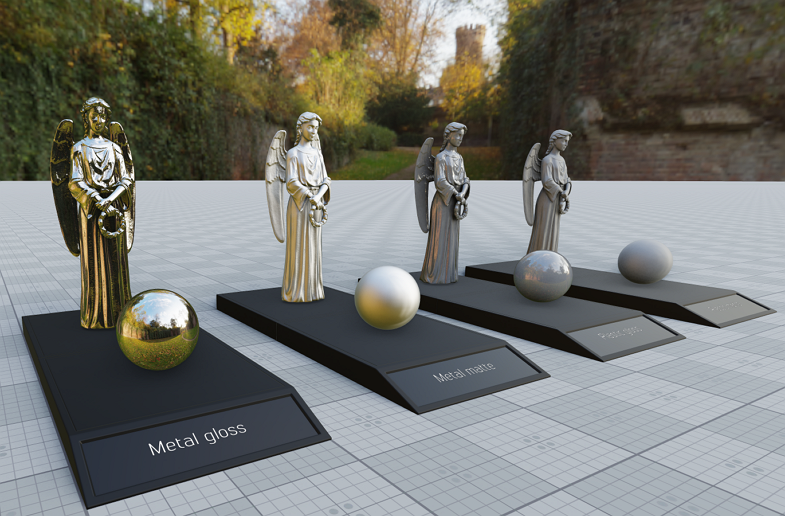Reflections
This article lists all types of rendering techniques used to simulate specular and diffuse reflections available in UNIGINE.
Environment Reflections#
This is the default type of reflections provided by the Environment settings.

Environment Probe Reflections#
To change reflections locally, Environment Probes are used. Both static and dynamic modes are supported.

Planar Reflections#
Planar Reflections is a dynamic reflections approach available via Planar Reflection Probes.

Screen-Space Reflections#
Screen-Space Reflections is a real-time technique for calculating reflections based on screen buffers with the help of raytracing algorithms.

Diffuse Reflections from Voxel Probes#
Diffuse Reflections are provided by baked voxel probes and can be used on rough surfaces.

The information on this page is valid for UNIGINE 2.18.1 SDK.
Last update:
2024-04-19
Help improve this article
Was this article helpful?
(or select a word/phrase and press Ctrl+Enter)